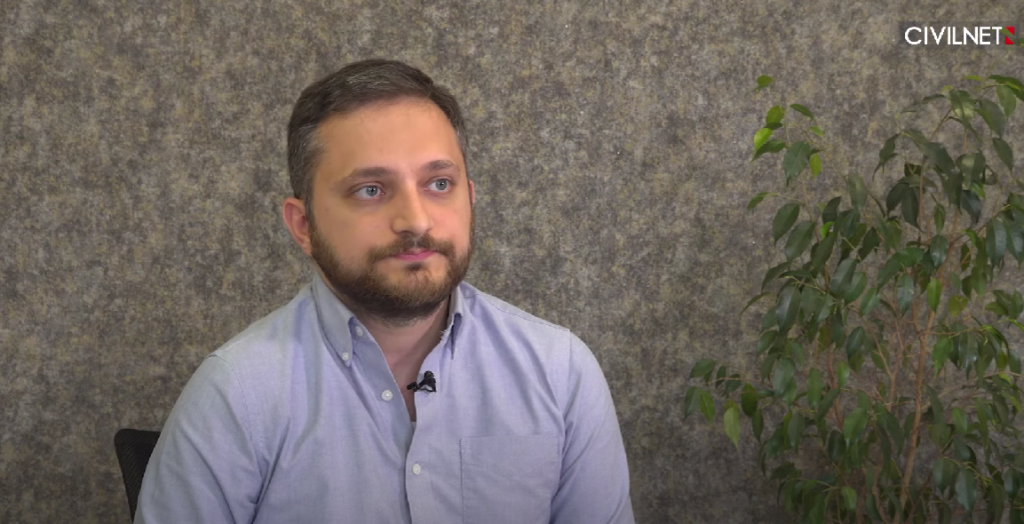By Lia Avagyan
By the window of her adapted workplace in Yerevan, Lusine Kerobyan reflects on her journey from Vanadzor to the capital in pursuit of employment opportunities. As one of only 27,000 employed individuals among Armenia’s 190,000 registered people with disabilities, her story illuminates both personal triumph and systemic challenges.
“Work is an essential part of everyone’s life,” says Lusine, who uses a wheelchair. “Through employment, a person can solve many problems and realize their potential. I’ve tried to fulfill myself in various fields. If one thing didn’t work out, I tried another. But there’s definitely a situation where a person with a disability faces barriers—because we can’t climb stairs independently, because there are no adapted doors. But everyone, regardless of health status, experiences difficulties finding work.”

For Lusine, her workplace accommodates her needs with wide doorways, accessible restrooms, ramps, and supportive colleagues—conditions that make employment possible for wheelchair users but remain uncommon across Armenia.
Physical Barriers and Workplace Accommodations
In Armenia, people with disabilities face numerous obstacles when seeking employment. According to Armen Alaverdyan, President of the UNISON NGO, the biggest challenge for wheelchair users is accessibility and freedom of movement.
“Unfortunately, many employers and institutions still don’t have these accommodations even for their customers, making it even more difficult to talk about employees,” Alaverdyan explains. “An employee needs more amenities if they’re going to spend the whole day at the company—there must be an adapted bathroom. For people with hearing impairments, there’s a communication challenge. How should they communicate with other employees? Sign language interpreters or other forms of communication are needed.”

The necessary accommodations vary widely depending on the type of disability. People with visual impairments need Braille markings, screen-reading software, magnification devices, and bright markings on stairs and passages. For those with hearing limitations, accommodations include text-based communication options, captioned videos, light signals, and technologies compatible with hearing devices. People with neurological or mental health conditions particularly benefit from flexible work schedules and quiet zones.
Employer Stereotypes and Government Support
People with disabilities in Armenia are often excluded from the labor market not due to lack of abilities but because of employers’ stereotypical perceptions that a person with disabilities cannot maintain a regular work schedule, will be frequently absent, or will have difficulties completing tasks.
“A common stereotype is that a person with a disability could be a burden for the company—that they’ll constantly complain or have difficulty adapting, which isn’t true,” notes Alaverdyan.
Mushegh Hovsepyan, President of the “Rights Agenda of Persons with Disabilities” NGO, points out another layer of difficulty: “Even when a person with a disability has a profession, finding employment remains challenging due to infrastructure issues. There are ongoing difficulties, such as needing assistance from others to leave home, which means the entire family schedule must be adapted to the specific person’s work conditions. Consequently, the support services that would facilitate employment simply don’t exist.”

Several years ago, Armenia had targeted support programs for this vulnerable group. For instance, employers who hired people with disabilities could receive income tax refunds and one-time support of up to 500,000 drams (approximately $1,250) to provide reasonable accommodations in the workplace. However, these targeted programs have now been removed and incorporated into several general employment programs available to everyone, including people with disabilities.
“There is no program in Armenia, no employment program that supports either the employer or the employee,” says Hovsepyan. “Having employment programs is one of the state’s obligations—the state is obliged to support people with disabilities in the process of searching for, finding, and securing jobs.”
According to Zhora Sargsyan, Head of the Labor and Employment Department at the Ministry of Labor and Social Affairs, the strategy has changed: “Our practice in recent years has been to implement programs not just specifically containing the words ‘person with disability,’ but rather programs where they can also be beneficiaries.”
In 2024, through the state employment program, 2,086 people found jobs, of whom only 18 were people with disabilities. Additionally, 1,289 people became temporarily employed, including 183 people with disabilities. Hovsepyan considers these numbers very small.
“Considering that we’re dealing with about 190,000 people who have disabilities, and the majority of them obviously don’t have long-term employment, the state’s three-digit or four-digit indicators cannot possibly satisfy people,” Hovsepyan states.
A Look at International Practices
Different countries implement both special and general programs to promote employment for people with disabilities, including financial support, training, and job placement services. For example, neighboring Georgia operates a professional rehabilitation agency that provides services such as professional assessment and counseling, job placement support, and assistive technologies. Turkey implements vocational training, job placement assistance, and financial incentives for employers. In France, employers are required to allocate 6% of their staff to people with disabilities.Despite legislation supporting the rights of people with disabilities, the reality in Armenia reveals a significant gap between policy and practice. With only about 14% of people with disabilities currently employed, mostly in education, manufacturing, service, and trade sectors, much work remains to create a truly inclusive labor market.
The post Barriers to Employment: The Struggle of People with Disabilities in Armenia appeared first on CIVILNET.